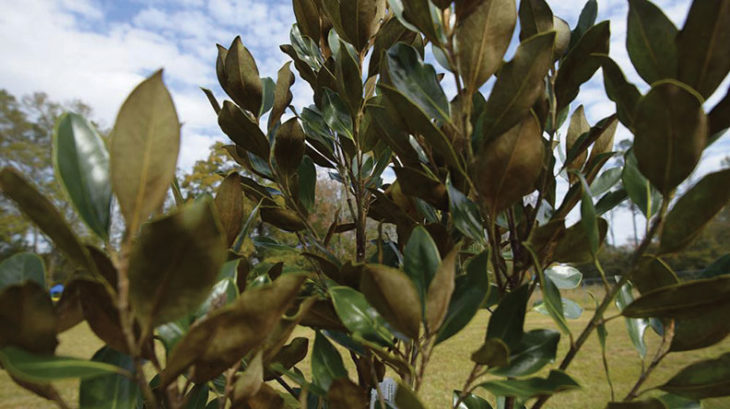By Mary Michaela Parker
There’s plenty to accomplish in your garden during the month of March. Get your outdoor space in shape with these easy tips.
PLANTING
- Plant new roses before March 15.
- Broad-leaved evergreens like magnolia and holly can be set out at this time.
- Plant cold weather annuals sweet William, English daisies, pansies and calendulas.
- Divide mondo grass and liriope. Divide cannas, chrysanthemums, coreopsis, phlox and obedient plant.
- Start seeds for tomatoes, bell peppers, and eggplant. Set out thyme, lemon balm, oregano, chives, sage and winter savory.
- Sow seeds of Johnny jump-ups, sweet peas, larkspur, forget-me-nots, and baby blue eyes.
- Flowering shrubs may be moved at this time. Larger shrubs should be moved with a ball of dirt, and smaller shrubs may be moved bare-rooted.
- This is the best month to move crape myrtles.
- Lawns may be sodded at this time. Plant gladiolus throughout this month for continuous bloom. Plant Hostas.
- Caladiums can be started in outdoor containers as soon as weather warms.
FERTILIZING
- Fertilize all the garden except acid-loving plants.
- Top-dress camellias with azalea-camellia fertilizer.
- Lime peonies, clematis and boxwoods.
- Pest Control
- Spray new rose leaves for black spot weekly.
PRUNING
- Prune roses at this time. Remove dead and weak canes. Properly dispose of clippings.
- Prune crape myrtles and altheas.
- Prune evergreens for shape and size as early in the month as possible.
- Cut English ivy back very hard. It will come back very nicely in the spring.
- Trim mondo grass and liriope with lawn mower set on highest setting (6 inches). Dispose of trimmings.
MULCH
- Replenish mulch around azaleas and camellias.
MISCELLANEOUS
- Dispose of fallen camellias blossoms to prevent blight.
- Rake up seed hulls from under bird feeders. They will smother new growth.
- Remove dead flowers from tulips and daffodils. Do not cut foliage before it turns yellow and dies.
HOME ACCENT
- Divide or repot overgrown house plants. Cut back weak parts to encourage new growth. Apply fertilizer every two weeks or so.
IN BLOOM
- Bluebells, chionodoxa, daffodils, hyacinth, early iris, pansies, violet, Carolina jasmine, azaleas and camellias, forsythia, pearl bush, photinia, flowering quince, spirea, flowering fruit trees (crabapple, cherry, pear, and peach), oriental magnolia and redbud.
So what are you waiting for? There’s lots of planting and pruning to be done!
Parker is marketing and communication coordinator for Agricultural Communications with the Mississippi State University Extension Service. Contact her at michaela.parker@msstate.edu.


